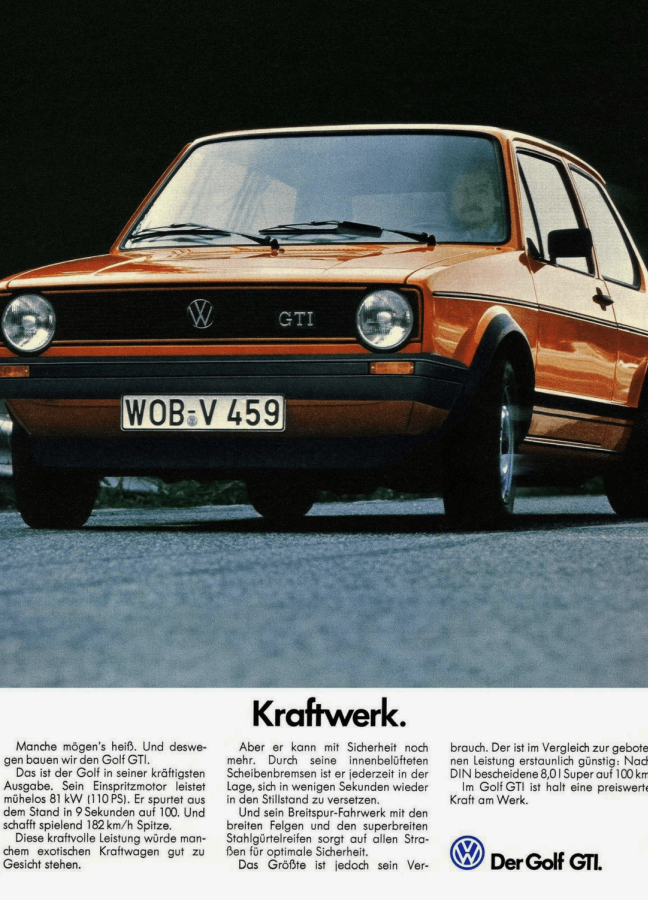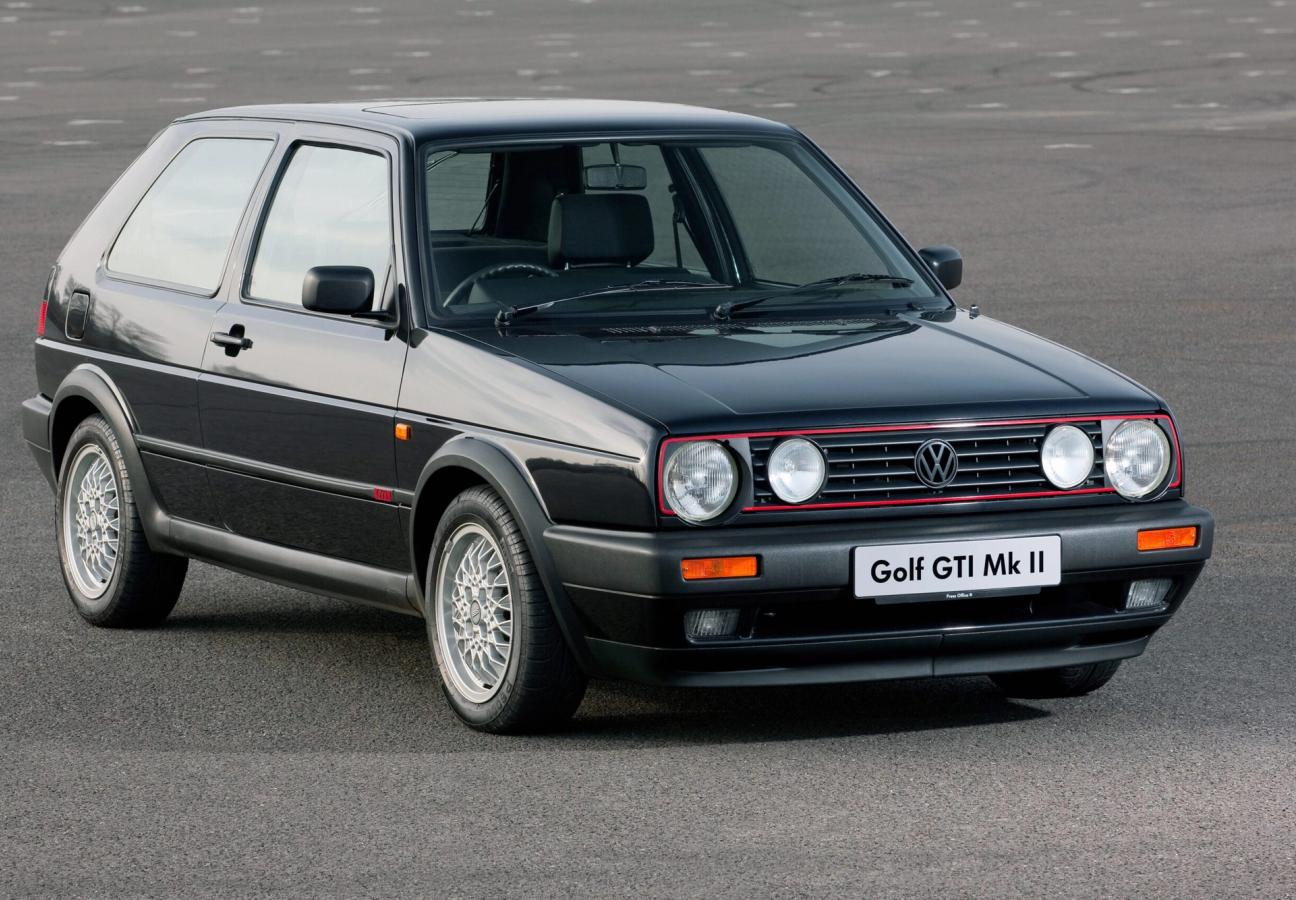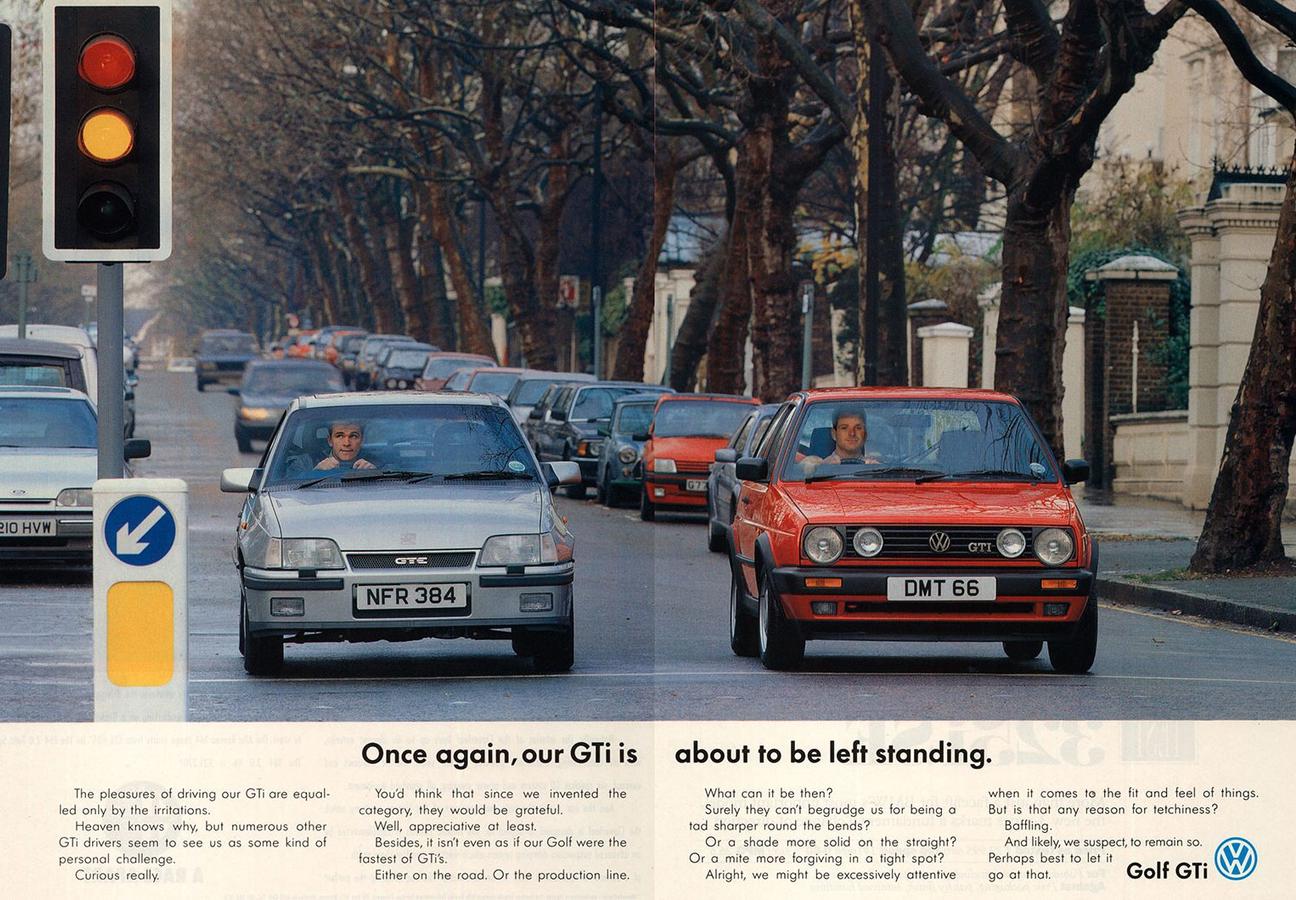

Words: Jonathan Wells
The story of the Volkswagen Golf GTI begins — as all good stories do — with an almighty surprise. In 1973, the German carmaker was under fire. It had rolled out the ‘Gelb-Schwarzer Renner’ edition of its iconic Beetle a year before, and the black-yellow motor had been denounced as a hooligan’s car. The people, it seemed, did not want Volkswagen dabbling with such fiery, snarling speed.
So, under the official radar, a group of renegade employees with fantastically German names — Hermann Hablitzel, anyone? — began smuggling parts from VW’s main production line and building a ‘Sport Golf’ prototype in secret. They whacked in a fuel-injected engine, coined the term GTI, from the Italian phrase ‘Gran Turismo Iniezione’, and presented their clandestine creation to the board. Who hated it.

“Undriveable,” came the verdict from the carmaker’s Chief of Research, Ernst Fiala. A year later, however, in 1975, the experimental Volkswagen was launched at the Frankfurt Motor Show; marginally refined and spruced up with bright tartan upholstery and a gear-knob that looked like a golf ball. Management still weren’t convinced. Production of the Mk1 Golf GTI was not expected to exceed 5,000 units.
How wrong they were. By the time the last Mk1 GTI rolled off the production line, there were almost half a million of them on the roads. But, while this surprising turn of events must have knocked Volkswagen for six, it also paved the way for the most covetable, handsome, hottest hatch in history; the Golf Mk2 GTI.
The Mk1 Golf GTI had proved so surprisingly successful that, for VW’s second crack of the whip, the brand largely stuck to its naturally-aspirated, straight-four guns. While the increased weight of the Mk2 GTI meant that it wasn’t as nippy as its predecessor, its 1.8 engine could still crank out a top speed of almost 120mph, and reach 60mph in under 10 seconds.
And the engine wasn’t the only thing that stayed the same. Volkswagen also kept the trademark hot red grille pinstripe and certain paint colours, such as Mars Red. Even the golf ball gear-knob was carried over — and has remained a piece of signature styling for the model even up to this year’s Mk8 GTI. But we’re firmly convinced that the Mk2 GTI was the high point of Volkswagen’s hot hatch back catalogue. And that’s for one simple reason; it wasn’t perfect.
We’re sure Volkswagen would be the first to admit that carrying the Mk1 GTI’s engine across into the Mk2 GTI was a misstep. But, in 1986, it was a misstep they remedied when they introduced the GTI 16V. With more power, the car shaved almost a whole second off its 0-60mph time, and boosted its horsepower to an enviable 139bhp. With a throaty bark, the Mk2 GTI had arrived proper.
And not a second too late. By the mid-80s, a flurry of petrol-powered pretenders were circling Volkswagen’s throne. From the Peugeot 205 GTI to the Toyota Corolla GTI, rival carmakers had nabbed VW’s catchy new acronym and slapped it on the back of their own models. Even Daihatsu tried its luck in 1987, with the disastrously uncool but undisputedly speedy Charade GTti (Why the extra t? Why indeed).
But the German carmaker rose above it. By the end of the eighties, it still reigned supreme — Sports Car International even named the Golf GTI the third best car of the entire decade. And the nineties were shaping up to be even better.

In 1990, the Mk2 GTI was given a facelift. The bumpers were redesigned to be bigger and larger bolsters were added to the seats. It was the same exciting car, but made safer. Which brings us to another of the many reasons we love the Mk2 GTI; versatility. Few cars can do it all but, as Volkswagen wrote in its own sales literature for the car: “The Volkswagen GTI earned its spurs by being all things to all men — as fast as any big name performance car and twice as practical; as useable as any shopping hatchback but twice as much fun to drive.”
We couldn’t have put it better ourselves. The charm of the Mk2 GTI can be found chiefly in its can-do attitude. It may not be quite as sharp as the Mk1 GTI, but it absorbed bumps on the road due to its longer suspension. It may not be as striking as a Lancia Delta Integrale or Fiat Strada Abarth, but its liquid wax-dipped bodywork at least ensured it would keep whatever looks it did have. And, next to the criminally misjudged Mk3 GTI that came next, it looks like automotive perfection anyway.
So let’s wrap up with one of the last adverts that Volkswagen ran for the Mk2 GTI. A one-page print advert, it shows a Tornado Red GTI sitting waiting at the lights beside a Vauxhall Astra, and goes on a self-aware, playfully tongue-in-cheek rant about all of the other cars to borrow the ‘GTI’ title.
“Once again,” it reads, “our GTI is about to be left standing. Heaven knows why, but numerous other GTI drivers seem to see us as some kind of personal challenge. Curious really. You’d think that since we invented the category, they would be grateful. Well, appreciative at least.

“Besides,” it continues, “it isn’t even as if our Golf were the fastest of GTIs. Either on the road or the production line. What can it be then? Surely they can’t begrudge us for being a tad sharper round the bends? Or a shade more solid on the straight? Or a mite more forgiving in a tight spot? Alright, we might be excessively attentive when it comes to the fit and feel of things. But is that any reason for tetchiness? Baffling. And likely, we suspect, to remain so.”
Or not, as the case has been. Because, while rival Peugeots, Fords, Renaults, Vauxhalls and Mazdas today crumble away in scrapyards, there is one car still turning heads and pushing on. The hot hatch with the last laugh. The VW Golf Mk2 GTI.
Want to learn more about another automotive icon? The Mercedes-Benz R129 SL is a royally modern classic…
Join the Gentleman’s Journal Clubhouse here.


